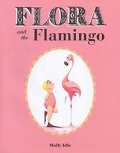 Wordless picture books are great for English language learning classrooms. Those with a limited grasp of the language can create their own stories using the images on the page. The books promote storytelling as everyone can add to the illustrations they see.
Wordless picture books are great for English language learning classrooms. Those with a limited grasp of the language can create their own stories using the images on the page. The books promote storytelling as everyone can add to the illustrations they see.
Chronicle Books lists the following reasons why wordless books are so important:
-
Emergent readers can generate a story based on the images they see.
-
Early readers can “read” their own verbal text.
-
Independent readers can add details with plot, characters and setting.
Caldecott award-winning books provide great selections for wordless lessons. Journey, written and illustrated by Aaron Becker, shows a little girl going from sepia images to a colorful world. This book could be used for whole class instruction or as a center activity for students to write their own version. Comparing student versions will demonstrate a variety of stories developed from these beautiful images. Flora and the Flamingo, written and illustrated by Molly Idle, offers interactive flaps to explore friendship. The Lion and the Mouse by Jerry Pinkney was a 2010 Caldecott Medal winner and has exquisite animal illustrations. As a bonus, integrating art into writing lessons is a STEAM strategy.
Unspoken: A Story from the Underground Railroad by Henry Cole is a wordless picture book perfect for social studies. A young girl discovers a runaway slave hidden in the barn. Will she be courageous enough to help? Students will learn just how challenging it was to run away and not be discovered. This book will stimulate many writing activities and promote further research on the Underground Railroad.
Wordless picture books can also be utilized by students of all ages. Older students love to see the illustrations capture the story. Once chapter books are introduced, children shy away from picture books. This is a great way to re-introduce picture books as a learning strategy.
We all know stories have a beginning, middle, and end and wordless books help promote sequencing. Inference can be taught with the pictures, even though words are not present. Students can predict what will happen next.
The genre of wordless picture books can promote critical thinking in your classroom. Many lessons can be garnered from this unique resource.
Earlier this year there was a Twitter chat on wordless picture books. You can access the archive for this chat here. For future chats, follow #titletalk on Twitter the last Sunday of each month from 8–9 p.m. EST.
 Marjie Podzielinski is a a member of the Advisory Committee of Teachers and a librarian at Coulson Tough School in The Woodlands, Texas.
Marjie Podzielinski is a a member of the Advisory Committee of Teachers and a librarian at Coulson Tough School in The Woodlands, Texas.
Teaching in ACTion is a series from the Advisory Committee of Teachers (ACT), an International Reading Association committee comprised of exemplary reading and literacy teachers from around the world. Educators who best exemplify the mission of IRA are chosen from a pool of applicants to serve a three-year term. Among other responsibilities, the main charge of ACT is to be the conduit between IRA’s members and the board of directors.
ACT invites member to engage in the conversation by sending responses to us. ACT’s goal is to get a feel for how members feel about current hot topics, so that we may better serve members by sharing their concerns with the board of directors.